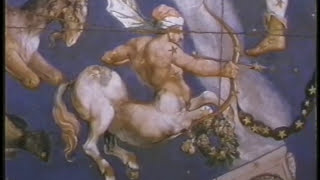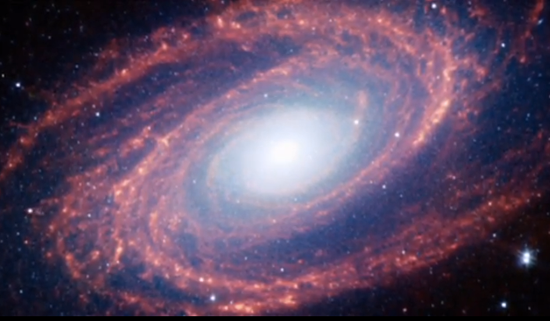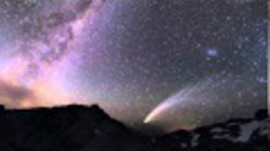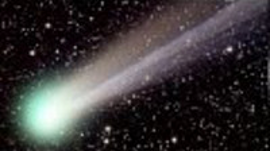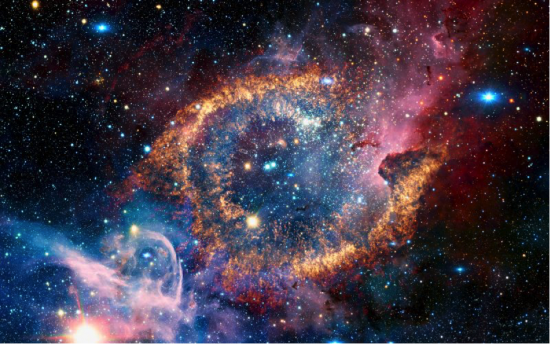
Not If, But When: Cosmology in Crisis
& The Coming Paradigm Shift, Part 2
by Dr. Ghada Chehade
In the previous article, I discussed cosmology’s impact on the broader culture and briefly introduced Thomas Kuhn’s concept of paradigm shift (or scientific revolution.) In this article, I explore his notion of paradigm shift in greater detail and look at how it applies to the present state of cosmology.
In his book, The Structure of Scientific Revolutions, Thomas Kuhn defined a paradigm shift as a type of scientific revolution. For Kuhn, science does not change gradually but is forced to change when a dominant model/theory in a given field is so broken that it cannot be fixed and a new model eventually supplants it. For Kuhn, a paradigm shift is not a singular thing but a process or a cycle with distinct stages. The stages1 are listed below, with my comments about how each pertains to cosmology in red bracketed font:
0. Pre-science – This is a pre-stage, where the field/discipline has no workable paradigm to successfully guide its work.
1. Normal Science – The normal step, where the field has a scientifically based model of understanding that works—(For Cosmology, for the past 100 or so years this model has been the Big Bang model, and its related features and concepts; though whether it works is debatable.)
2. Model Drift – The model of understanding starts to drift, due to accumulation of anomalies and phenomenon the model cannot explain—(To date concepts like dark matter, dark energy, and black holes are not fully understood, proven or explainable, even by scientists that coined them.)
3. Model Crisis – The Model Drift becomes so excessive that the model is broken. It can no longer serve as a reliable guide to problem-solving. Attempts to patch the model up to make it work fail. The field is in anguish—(I argue below that we are presently at this stage in the cycle. Even mainstream scientists are beginning to lament that the existing cosmological model is fraught with anomalies and contradictions and may be in trouble. I give examples below.)
4. Model Revolution – This begins when serious candidates for a new model emerge. It’s a revolution because the new model is so radically different from the old one—(Some might argue that this stage has also already begun and that the new model is the Electric Universe Theory, a point I revisit briefly in article three of this series, and then in greater detail in the next series.)
5. Paradigm Change – A single new paradigm emerges and the field changes from the old to the new paradigm. When this step ends the new paradigm becomes the new Normal Science and the Kuhn Cycle is complete—(With respect to current cosmology, this stage has yet to happen.)
Overall, the Kuhn cycle looks like this:
pre-science – normal science – crisis – revolution – new normal science – new crisis—new revolution.2
The Present Reality: A Cosmology In Crisis
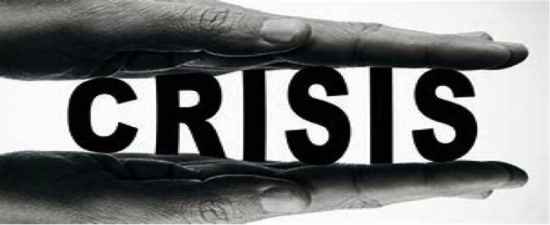
While Kuhn’s work redefined/revolutionized how we think about science and the nature of scientific change, it was also met with some criticism, both in his lifetime and till the present day. However, looking at the present state of cosmology (and astrophysics), one can argue that Kuhn is being vindicated from beyond the grave. Kuhn’s supposition that science is forced to change and that a crisis or breakdown in the dominant model within a particular field makes way for the change—and by extension a new model—is presently playing out in our lifetime. While the change or paradigm shift has yet to fully happen, with respect to cosmology, it is becoming apparent that we are in the midst of the Kuhn cycle and are presently in the Model Crisis stage.
If you follow cosmology and astrophysics, you may have noticed that the biggest topic and debate in cosmology at present seems to be cosmology itself. Over the last few years, there is a growing sense that something’s not quite right, with article after article pointing to a crisis in cosmology. Popular mainstream science magazines and websites are full of headlines suggesting that there is something unexpected or strange or mysterious going on in Big Bang cosmology and that cosmology is in a state of crisis. I list some of these headlines below. This is a truncated list—in no particular order—of selected article titles intended to give you a general idea of what has been said in recent years.
Source of the articles can be found in the (Month/Year) link.
- “Do We Have the Big Bang Theory All Wrong?” (July 2014)
- “The Paradoxes That Threaten To Tear Modern Cosmology Apart” (January 2015)
- “No Big Bang? Quantum equation predicts universe has no beginning” (February 2015)
- “Cosmology Is in Crisis Over How to Measure the Universe” (November 2018)
- “The Crisis in Cosmology” (PBS video, January 2019)
- “Best-Yet Measurements Deepen Cosmological Crisis” (March 2019)
- “Could All Our Scientific Knowledge Come Tumbling Down Like A House of Cards?” (April 2019)
- “Could the Big Bang Be Wrong?” (June 2019)
- “A crisis in cosmology: New data suggests the universe expanding more rapidly than believed” (October 2019)
- “The universe is expanding faster than scientists thought, a study confirms — a ‘crisis in cosmology’ that could require a ‘new physics’” (October 2019)
- “Cosmological crisis: We don’t know if the universe is round or flat” (November 2019)
- “Our understanding of the universe could be fundamentally wrong, astronomers say” (November 2019)
- “Scientists are baffled: What’s up with the universe?” (November 2019)
- “Astronomers Cast Doubt on the Cosmological Principle” (December 2019)
- “The Real Crisis in Cosmology.” YouTube Video (January 2020)
- “Light elements add weighty burden to crisis in cosmology” (January 2020)
- “The Universe May Not Be Expanding Equally In Every Direction, New Study Suggests” (April 2020)
- “Strange Extragalactic Strands Mystify Astronomers” (April 2020)
- “Universe may actually have a ‘north’ and a ‘south’ as new tests tear holes in Einstein’s gravity theory” (April 2020)
- “Mankind’s Existence Now Depends on the Establishment of a New Paradigm” (Conference Video, April 2020)
- “Is It Time To Dethrone The Big Bang Theory?” (May 2020)
- “Is the Big Bang in crisis?” (May 2020)
- “There Is Something Strange About Our Universe, Scientists Find After Mapping The Cosmos” (July 2020)
- “Unique prediction of ‘modified gravity’ challenges dark matter theory” (December 2020)
You will notice that most of these articles are recent, dating from 2020 or 2019. While scientists have been aware of a crisis in cosmology—as variably defined—since at least 1995, that awareness has increased exponentially in very recent years.3 Eric Lerner, chief scientist at LPP Fusion, conducted an unscientific study of Google listings to determine references to the crisis in cosmology. According to Lerner, back in 1995 there was about one reference every year to the crisis. By the beginning of the 2000s it had gone up to five references per year and then 12 references by the mid 2000s. By the latter part of the present decade it was about two dozen references per year and then in 2019 it shot up to a hundred and thirty references per year.4 That is a drastic increase in just the last two years. While scientists do not agree about the nature of the cosmological crisis, there is clearly an expanded awareness of a crisis or problem. As Lerner explains, there is presently “a general awareness; both in the field and in the popular media.” 5

In general, the articles deal with one or both of the following, as it relates to cosmology and the Big Bang model:
I. Anomaly–something that deviates from what is standard, normal, or expected.
II. Contradiction–a combination of statements, ideas, or features/findings/observations of a situation that are opposed to one another; and/or a situation in which inconsistent elements are present; and/or the statement of a position opposite to one already made.
Most of the articles listed deal with new information, measurements or findings that undermine, contradict, or problematize the major principles, assumptions, and/or expectations of the Big Bang Theory in some way. According to the articles, these unexpected and unexplainable findings deviate from or contradict the Big Bang Theory and “mystify” scientists (i.e., are things the theory and its thinkers cannot explain or answer.) Examples of some of the anomalies and contradictions discussed in the articles are:
- The Hubble Constant is wrong (i.e., the universe not expanding as we thought or at all.)
- Planck measurements suggest that the universe is round not flat.
- The cosmological principle is wrong or inconsistent (meaning the universe is more or less homogenous than we thought.)
- Various bedrock predictions of the Big Bang theory that have been contradicted by abundant observations.
In Thomas Kuhn’s paradigm shift/scientific revolution stages, when there are a few anomalies and contradictions, then the dominant model or normal science can be said to be in a state of drift. When too many anomalies and contradictions accumulate, then the model is in a state of crisis. To reiterate from above, in the Kuhn cycle, Model Crisis occurs when the Model Drift (i.e., anomalies) becomes so excessive that the model is broken and can no longer serve as a reliable guide to problem-solving. At the crisis stage, attempts to patch the model up and make it work fail, and the field is in anguish.
The mounting, unresolvable anomalies discussed in these articles suggest that the Big Bang model has reached Kuhn’s crisis stage and is unable to adequately address or solve the many anomalies and contradictions—such as the observation or discovery of contradictory phenomenon and measurements—that presently undermine the Big Bang Theory and its ideas about the universe.
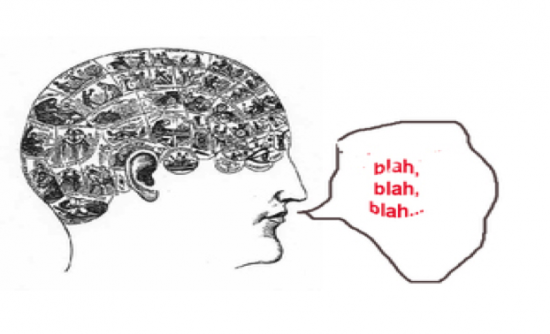
I am not qualified to address the scientific content of the articles. But as a discourse analyst, I do wish to point out some things that I find interesting about the articles themselves. While many of the article titles mention a crisis in Big Bang cosmology, the content and conclusions do not question and problematize the Big Bang model outright (though some do give lip service to the possible need for a new physics.) In critical discourse analysis, this can be identified as a problematic discursive strategy wherein the tone of the articles’ titles does not match the tone of the articles’ content and conclusions.
In several of these articles, the tone of the title suggests or hints at an altogether different conclusion than what we end up with. As previously stated, while many of the articles have bombastic and alarmist titles—that might lead the reader to assume the article is about to call the entire big bang theory into question or doubt—the conclusions are disproportionate at best and apologist at worst. In the latter case, a couple of the articles and videos actually conclude that the contradictions of the Big Bang model are actually strengths in that they open the door for new and exciting areas of research.
One example from the above list is the PBS program entitled “The Crisis in Cosmology.” While the video explains that expansion may not be happening as the Big Bang model first proposed, it implies at the end that this is actually a positive thing because it opens the door for new areas of discovery. In other words, the video doubles down on the Big Bang model rather than calling it into question (as one might assume it would, given its title.)

Overall, there is a type of rhetorical bait and switch at play here, where the reader is led to assume one thing from the title, only to end up with an altogether different—and even contradictory—conclusion at the article’s end. To conclude that the crisis in Big Bang cosmology opens new and exciting doors for research in Big Bang theory is not a satisfactory or scientifically/empirically rigorous conclusion. Rather than address the crisis in Big Bang cosmology, this type of rhetoric doubles down on it and ultimately shields it; not least by turning the anomalies and contradictions that underlie it into strengths rather than weaknesses. In the end, many of the mainstream articles about the crisis in cosmology serve to shield the crisis rather than address it in a meaningful or critical manner.
The Universe Is Stranger Than We Thought?

Another popular claim made by mainstream cosmology is that the universe is far more strange or weird than we originally thought, and this is why there are so many anomalies and contradictions that the Big Bang cannot address. This type of deflection is especially interesting because it blames the failures/inadequacies of standard cosmology on the cosmos rather than the model or theory. An internet search on this topic brings up numerous titles dealing with the strangeness or weirdness of the universe.
Source of the articles can be found in the (Month/Year) link.
- “How Astronomers Revolutionized Our View of the Cosmos: The universe turns out to be much bigger and weirder than anyone thought” (September 2020)
- “Our Solar System Is Even Stranger Than We Thought” (October 2018)
- “Astronomers Don’t Know What to Make of This Incredibly Bizarre Star” (July 2019)
- “The Universe Is Stranger Than We Thought” (Summer 2014)
- “New findings reveal universe is weirder than we thought” (April 2020)
- “Unexplained Phenomena Keep Suggesting the Universe Isn’t What We Thought” (May 2020)
- “Is the Universe OUT of TUNE?” (August 2005)
The idea that the universe is stranger than we think (or can imagine) is not new. It has been around for a long time and is as much a philosophical issue as it is scientific. For this article, however, I am only interested in it as it pertains to the present cosmological model. This rationalization—that the universe is stranger than we thought—is increasingly repeated in popular science magazines and websites.
Repetition is another effective device in dominant discourse and texts and one that can create a false sense of authority and truthfulness. If something is repeated enough times—in this case, that the universe is stranger than we thought and this is why the Big Bang cannot adequately explain or describe it—it takes on an air of truth that can mislead readers into agreeing with certain conclusions or smokescreens.
In critical discourse analysis, repetition is identified as a discursive tool that is used to normalize and protect dominant discourse and dominant institutions6 (in this case the dominant/mainstream cosmological theory or model.) With repetition, there is always a degree of manipulation and power at work. The idea that the universe is stranger than we thought or too strange to be understood can serve to reinforce the power, existence, and hegemony of the dominant cosmological model while manipulating the reader in a manner that prevents them from questioning the dominance of the model. The repetition of a false or speculative reality—i.e., that the universe just keeps getting stranger—stops the reader from entertaining an alternative reality: That the Big Bang model is not adequately equipped to address the anomalies and contradictions of its field (and that other models may be better equipped to answer some of the questions of the universe.) The ultimate effect of the aforementioned discursive techniques is to disguise or negate the crisis in cosmology and avoid deeper discussions of the implications of the crisis.
If the universe keeps getting ‘weirder’ and if scientists keep finding measurements and discoveries that contradict the Big Bang Theory, and its guiding principles, is it not possible that the problem lies with the model and not the ‘strange and wacky universe.’
Whatever the articles’ ultimate conclusions about the cosmological crisis, the very fact that every online outlet from The New Scientist, Astronomy.com, and Physics.org to non-science based magazines like Wired, The Independent, Business Insider, and Forbes are all talking about a crisis in cosmology drives home that there is indeed a cosmological crisis and that it is getting worse and more palpable by the day. When analyzed through the lens of Kuhn’s groundbreaking work, this strongly suggests that we are on the cusp of an important cosmological paradigm shift or scientific revolution.
A Note on Cosmological ‘Weirdness’
Perhaps in past times a chorus saying that the universe was weirder than initially thought to be would have been automatically ridiculed and regarded as preposterous. After all, the Prime Mover in an Age of Reason would never create a universe that was irrational. Then why is it not only tolerated today but exclaimed today?
In a self-reinforcing cycle, the universe’s weirdness or non-conformity is publicly casually accepted exactly because of the general culture and attitudes resulting from the cultural changes abstractly derived from Relativity and the Big Bang Theory in the 20th century as was explored in article one. With these broader cultural changes, the relativity narrative creates its own perceptual environment within which the individual intrinsically accepts the paradoxical precepts of the original narrative itself, thereby preventing subsequent declarations and celebrations of weirdness and inconsistencies to be considered problematic.
Due to the cultural changes ushered in by the broader application of relativity to the non-sciences manifesting largely as cultural relativism, there appears to be an inability to consider weirdness and strangeness as critical warnings of fundamental theoretical errors or problems. The relativity narrative creates an environment that espouses a counterintuitive defense mechanism. It shields itself in paradoxical thinking, and the tolerance and espousal of ‘weirdness,’ becoming impervious to falsification and serious questioning. Under Kuhn’s analysis, the acceptance and celebration of weirdness and paradoxical thinking are further indications of a model in crisis.
Model Revolution

Following Model Crisis, the next stage in Thomas Kuhn’s paradigm shift process is Model Revolution. To reiterate from above, the Model Revolution begins when serious candidates for a new model emerge. For Kuhn, it is a revolution because the new model is so radically different from the old one.
While we are not far into this stage of the Kuhn cycle, with respect to cosmology and astrophysics, we may be at the beginning of a Model Revolution, and one alternative theory, in particular, may be at the forefront of this revolution: The Electric Universe Theory. This theory will be discussed in article three of the series.
When the dominant cosmological model is in anguish and cannot sufficiently answer or describe the mysteries of the universe—nor adequately address the mounting anomalies and contradictions that arise within, and from the application of, the dominant model—then it is only natural that other models would arise that attempt to do just that.
Given that the Big Bang model is presently the dominant cosmological model and has been for many many years, it may be easy to forget that, to date, “The Big Bang model is not completely proven.” 7 As previously stated, the key principle of the Big Bang model—that of expansion—remains problematic: “Scientists have not been able to come up with consistent measurements on expansion.” This has caused astronomers “to question some of the most basic [Big Bang] assumptions about our universe.” 8 As one online science commentator notes with the standard model of cosmology: “The more we learn the less we appear to understand.” For instance, “we’ve never actually seen a black hole . . . never actually conclusively found proof of one.” Furthermore, “Black holes don’t even explain much by themselves . . . Dark matter and dark energy are said to account for over 90% of the universe’s energy and yet we know very little about its nature and are no closer to finding it now than when it was first hypothesized.” 9 The narrator of the video goes on to state that:
“With over 90% of matter in the universe being completely inexplicable by our accepted models of cosmology, doesn’t that cast doubt over cosmology itself? Why do we know so much yet can explain so little with it? Perhaps the answers are not attainable by our current accepted theories and perhaps the truth lies within a wildly different approach. One such approach is the electric universe theory.” 10
I wish to close by stating that we should be open to the possibility that the present cosmology does not have all the answers. Indeed, according to Thomas Kuhn’s understanding of science and scientific change, the present model appears to be in deep trouble. For Kuhn, when there are too many anomalies and contradictions that a theory cannot adequately solve or address, then that theory must be said to be in a state of crisis. The mounting anomalies and contradictions suggest that, with respect to explaining and understanding the universe, the Big Bang Theory confounds more than it illuminates, and is presently in a state of crisis. As such, it may be time for a new model like the Electric Universe Theory, which I will begin to explore in the next article.
NOTES
1 https://www.ipmu.jp/sites/default/files/webfm/pdfs/news13/E_FEATURE.pdf
2 Ibid.
3 https://www.youtube.com/watch?v=3KkhRibBllU
4 Ibid.
5 Ibid.
6 Chehade, G. (2012). “Anti-Terrorism Discourse and the War on Dissent: A Critical Analysis“
7 https://interestingengineering.com/5-alternatives-to-the-big-bang-theory
8 https://www.youtube.com/watch?v=72cM_E6bsOs
9 https://www.youtube.com/watch?v=Uzw6s4nbTZA&feature=emb_logo
10 Ibid.
Copyright © 2021 Ghada Chehade. All content in this article is the sole property of the author and can only be reproduced with the expressed permission of the author, Ghada Chehade.

Dr. Ghada Chehade is an award-winning writer, social critic and performance poet. She spent over a decade as a political analyst, specializing in geopolitics and the study of socio-political change. Her articles and essays have been published in international publications such as Asia Times, The Political Anthropologist, and The Global Analyst. She recently broadened her focus to include an analysis of how changes in science and cosmology impact the larger culture. Dr. Chehade holds a Bachelor’s degree in Political Science, an MA in Communication Studies and a PhD in Discourse Analysis, from McGill University. Her doctoral research won the award for Best Dissertation from the Canadian Association for the Study of Discourse and Writing and was funded by the Social Sciences and Humanities Research Council.
Dr. Chehade’s earlier articles on the Electric Universe model can be found at soapbox-blog.com.
Email info@ghadachehade.com
The ideas expressed in Thunderblogs do not necessarily express the views of T-Bolts Group Inc. or The Thunderbolts Project.








